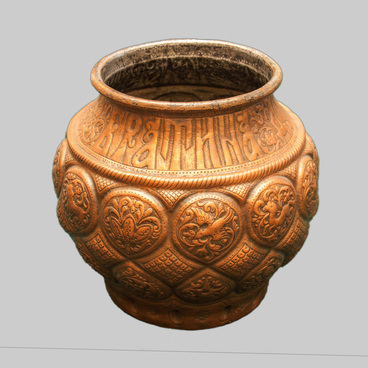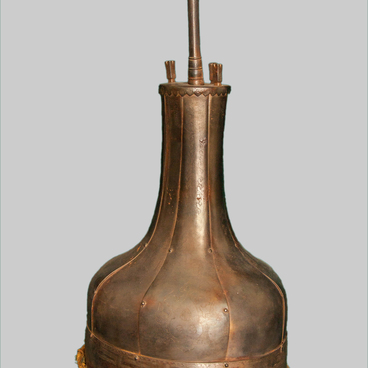In the second half of the 18th century, under the patronage of Empress Catherine II, one of the first scientific and public organizations of the Russian Empire was founded - the ‘Imperial Free Economic Society for the Encouragement in Russia of Agriculture and House-Building.’ The society’s coat of arms depicts “a bee bringing honey to the hive”, a tree, a sheaf, a harrow, a rake and a shovel, and the motto consisted of only one word — “Useful”. Famous noblemen and the richest landowners of Russia joined in the desire to spread useful and necessary information for agriculture and house-building among the people.
One of the most large-scale actions of the company was the promotion of growing new potatoes for Russia. By order of Catherine II, parcels with root vegetables, as well as printed recommendations on the method of cultivation, storage and preparation were sent to all the governors of the country. The Society paid great attention to studying of agricultural issues, and encouraging success in agriculture, Empress Catherine II established awarding medals. These were the first medals in Russia that pointed out non-military services to the state. The Free Economic Society received its own special emblem and permission to use the personal symbol of Empress Catherine II.
The exposition of the Tobolsk Museum Reserve contains a silver medal “Tribute for labours”. On the front side is a chest portrait of the Empress with a crown on her head. Around the edge of the medal there is an inscription “BY THE GRACE OF GOD, CATHERINE II. EMPRESS AND AUTOCRAT OF ALL RUSSIA” (By the Grace of God, Catherine II Empress and Autocrat of All Russia). On the reverse side, there is an allegorical image of the goddess of fertility Ceres in a wreath of ears and flowers under a palm tree on sheaves. In her left hand, she holds a rod wrapped in two serpents facing each other– a caduceus and a laurel wreath — in her right. In the distance you can see a plowing farmer. At the top around the edge of the medal there is an inscription — “Tribute for labours”. Authors of this medal — Johann Balthasar Gass and Johann Georg Waechter — German medallionists, skilled masters of their craft. They also made medals for Russia “for the conclusion of peace with Turkey in 1774”, in honor of count A. G. Orlov from the Admiralty Board, for the birth of Grand Lord Alexander Pavlovich.
One of the most large-scale actions of the company was the promotion of growing new potatoes for Russia. By order of Catherine II, parcels with root vegetables, as well as printed recommendations on the method of cultivation, storage and preparation were sent to all the governors of the country. The Society paid great attention to studying of agricultural issues, and encouraging success in agriculture, Empress Catherine II established awarding medals. These were the first medals in Russia that pointed out non-military services to the state. The Free Economic Society received its own special emblem and permission to use the personal symbol of Empress Catherine II.
The exposition of the Tobolsk Museum Reserve contains a silver medal “Tribute for labours”. On the front side is a chest portrait of the Empress with a crown on her head. Around the edge of the medal there is an inscription “BY THE GRACE OF GOD, CATHERINE II. EMPRESS AND AUTOCRAT OF ALL RUSSIA” (By the Grace of God, Catherine II Empress and Autocrat of All Russia). On the reverse side, there is an allegorical image of the goddess of fertility Ceres in a wreath of ears and flowers under a palm tree on sheaves. In her left hand, she holds a rod wrapped in two serpents facing each other– a caduceus and a laurel wreath — in her right. In the distance you can see a plowing farmer. At the top around the edge of the medal there is an inscription — “Tribute for labours”. Authors of this medal — Johann Balthasar Gass and Johann Georg Waechter — German medallionists, skilled masters of their craft. They also made medals for Russia “for the conclusion of peace with Turkey in 1774”, in honor of count A. G. Orlov from the Admiralty Board, for the birth of Grand Lord Alexander Pavlovich.



